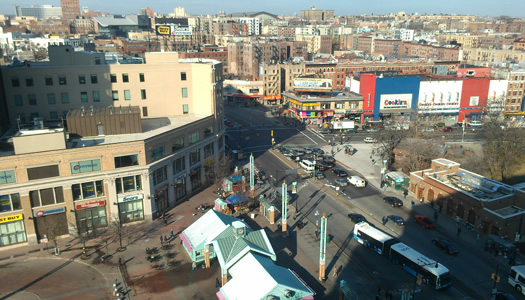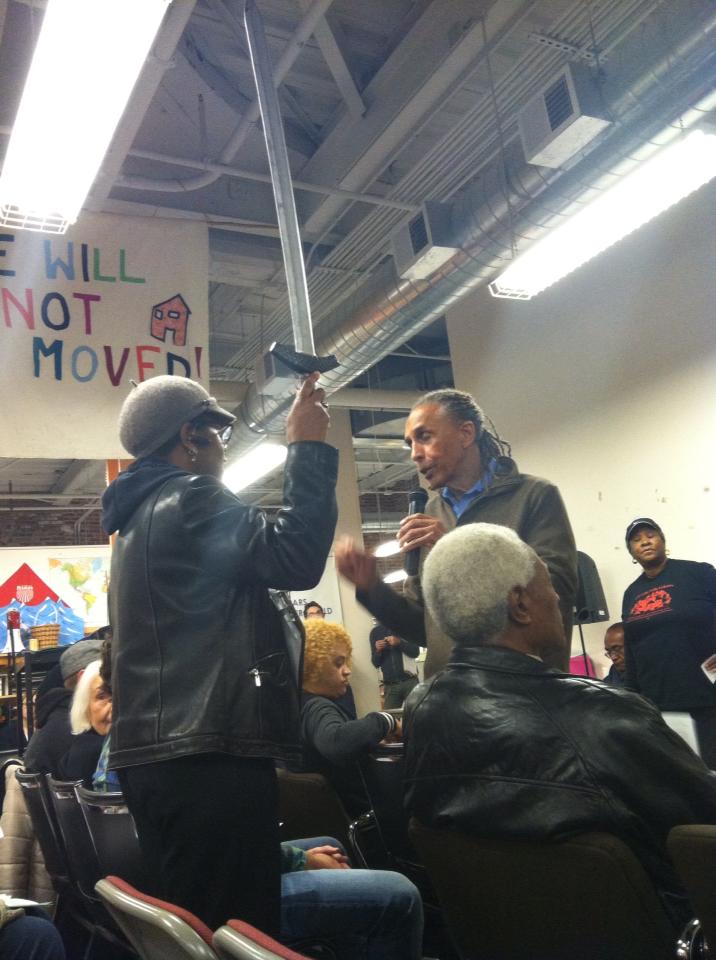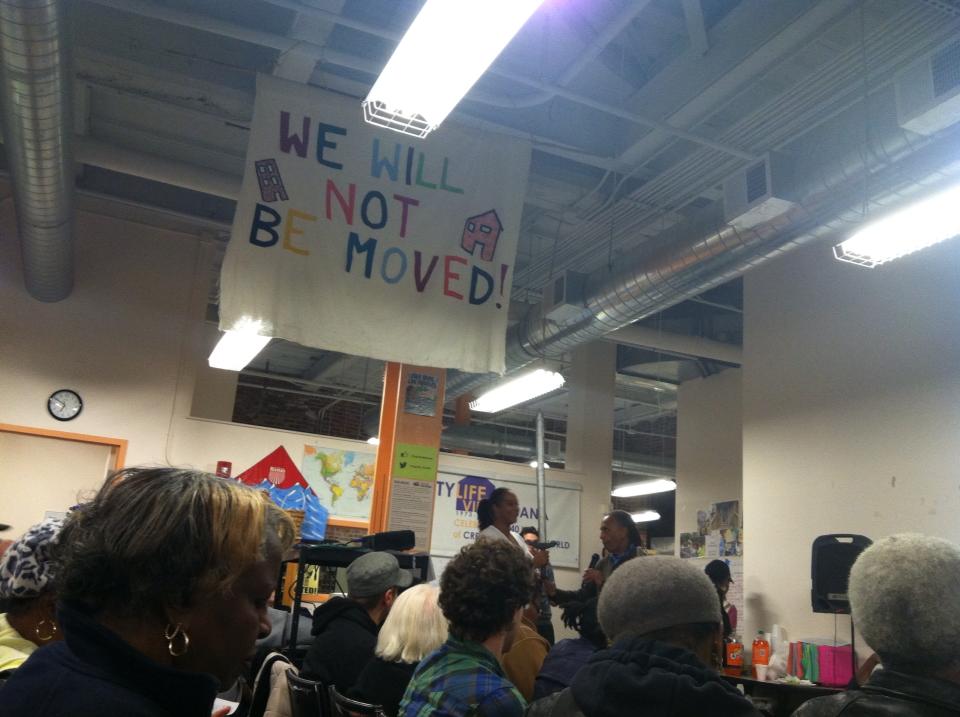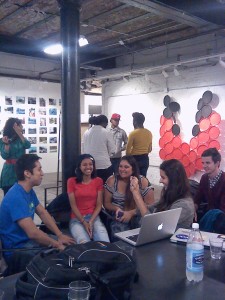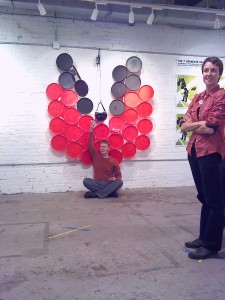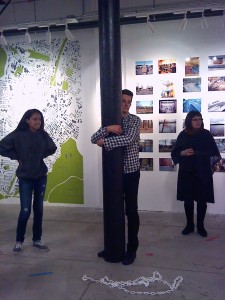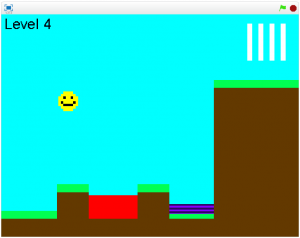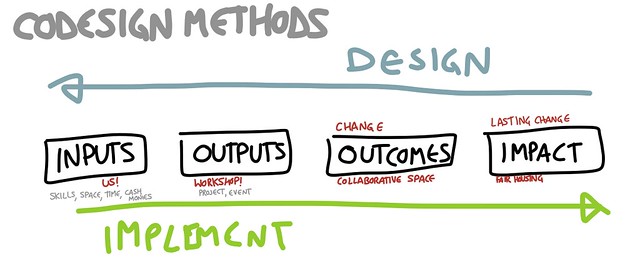Surveillance, how it pertains to us personally if you’re in a relationship.
These notes were co-taken in class, and I think they were awesome enough to merit posting to the class blog.
Speakers
– Sarah Cortes – a board member of Transition House, Tor researcher, and a PhD candidate working on anonymous networks.
– Andrew Lewman – a board member and executive director of the Tor Project, domestic violence advocate
Background Reading
Coercive control – 18 page summary
Tone and Terms
Domestic Violence. Violence is not the identifying factor of the problem. More of a myth and misconception that prevents people from understanding the underlying issue. Now it’s intimate partner abuse. Domestic is family – could be among many family members. Intimate partner abuse is just between intimate partners. Abuse means not just physical but also emotional, psychological, financial abuse, children. Many forms. Important to understand the terms we use.
Surveillance of government and partner abuse. Same concepts apply to both situations. One of the concepts in intimate partner abuse in the Western world is that intimate abuse is about a desire for control, due to an attitude of entitlement. Power and control. Similarly, a government’s surveillance is out of a desire for control and an a feeling of entitlement over citizens.
Entitlement
Entitlement in different societies, what are things you’re familiar with?
- Class systems in cultures are based on cultures of entitlement
- The US supposedly has no class system. But we do, we just don’t talk about it. What are these based on? Money and power. Point oh oh one percent is the concentration of wealth and power. Entitlement and the class system are about being sorted by wealth. Different entitlements and things.
- Ethnicity and Caste. – Sri Lanka. We say we don’t have a caste-based system, but it feeds into how our class-based system are caste-based. Some are “more equal than others.”
- Entities as … this is being drawn.
In intimate partner relationships.
If you think of them as their relative worth and needs and wants; if you think they have same relative worth and equal representation of needs and wants. In an abusive relationship, abusers feel their needs and wants and relative worth as significantly more prominent than their partner.
Abusers are people who have an attitude of entitlement over their partners. We see this same entitlement in class based systems, for example, the US class system.
We tend to magnify the opinions of wealthy people and denigrate the opinions of less wealthy.
In companies – there are different cultures. Entitlement is based on performance or different classes of people depending on a hierarchy.
In Japan, another example is seniority.
In England or the UK – they have a class-based system based on nobility and a peasant class.
Another concept that is important to understand is a lot of misconceptions.
That abuse is caused by alcoholism, drugs, that people who commit physical violence belong to a different category of abusers. That’s not actually true. One concept of abusers is that there is a continuum of abuse. There is a continuum of abuse – physical abuse on the far end and sexual abuse on the other with emotional, financial to academic, etc.
Continuum of Abuse
Abusers feel the need to exercise control over their abusers. They employ tactics, whatever works. Typically, they start out with a small tactic, and eventually destroy the self-esteem of the group who is being oppressed. Initially the person who is being abused doesn’t understand what is happening. In most situations, eventually, the victim will start to fight back. At that point, the abuser will step up to a new strategy, abusing children, financial abuse.
Eventually, a cycle ensues in which the victim steps up and fights back until the abuser is committing physical and sexual violence.
Often we see there is a pattern of abuse and other people, neighbors, bystanders will have noticed.

Let’s turn to governments and surveillance. The same value system will apply — certain groups are targeted nad denigrated.
Certain groups are denigrated and entitled groups feel entitled to surveillance. Surveillance starts out small but then takes smaller steps to include more groups.
Nushelle: If you have a system with a very vocal civil society – what happens?
We say we’re in a state of undemocratic democracy. (didn’t hear the rest…). If people fight back, step up, where there be higher levels of surveillance?
Manipulation and Excuse Making
Abusers in all forms make use of both of these
– 1945 (corporate interests, those who wanted to be reelected)
Civilians heard a different story: American fighting for democrac
Vietnam War, gulf of Tonkin Incident: http://en.wikipedia.org/wiki/Gulf_of_Tonkin_incident
Naval vessels came under attack from the North Vietnamese (FOIA reports later found that the second supposed attack, evidence was completely fabricated) to incite the public to support the war effort, escalating incidents but aren’t immediately clear. The idea is to divert people’s attention from what is really going on.
What is the cure/remedy
Due to attitudes and beliefs (women have less value, have certain characteristics), there is a belief then that that power and control has to be exercised over them, that other people have to continually to keep them under control.
The antidote is to change attitudes. courts started to
When governments perform surveillance – no one considers that it’s due to drug abuse or mental illness. It’s about belief in the inequality of those citizens.
Question and Answer
Question for those who have worked in domestic abuse in the past, is this type of training the same type of information you were given before? Or in sex ed class?
- A: Yes, we did talk about Imbalances of power, and attitudes and beliefs.
- A: Ideas deal with breaking cycles of abuse?
Q: What happens when people step up to new levels?
- A: If there’s no change in the attitude of entitlement, than abusers will continue to step up their tactics which is why abuse sometimes end in murder. It’s the ultimate expression of control over another.
In governments we find a continual escalation. Eventually this sometimes leads to abused communities fighting back. But the abuser can never accept that the victim is actually being victimized. The response is seen as an encroachment on their own entitlement. The response is seen as an attack. So whether it’s governments, or abusive partners, it will continue sadly to escalate if it’s not checked.
How does this apply to this class?
In the same way we see things such as physical abuse more noticeable as emotional and psychological abuse, we see an act of physical violence as a tangible line which we can respond. In the same way, with surveillance it has been a slow escalation but now there are new revelations about the extent of surveillance.
U.S. has different capabilities. US has been swallowing not only metadata but all phone comms; with potential to do so in 6-7 countries. MYSTIC, revealed today in the Washington Post, from Edward Snowden’s leaked documents: http://www.washingtonpost.com/world/national-security/nsa-surveillance-program-reaches-into-the-past-to-retrieve-replay-phone-calls/2014/03/18/226d2646-ade9-11e3-a49e-76adc9210f19_story.html
Do we all believe that the US is collecting metadata on all communications in one country?
People think it’s possible but not sure it’s happening. Afghanistan, Pakistan are listed as possibilities.
But this news is met with ho-hum because people don’t see how it applies to them.
On slowly boiling frogs: http://en.wikipedia.org/wiki/Boiling_frog
Passing around book: Why Do They Kill
Where Does This Start?
Victims have no characteristics in common.
Targets of government system are pretty overt from race to class
Blaming the victim applies both to domestic abuse, and state surveillance: people assume ’they must have done something wrong.’
Children of abusers – you learn power and control from watching the dynamics of your parents, foster care, schooling, whatever, where there is a vast power dynamic between you and the people in your life. Origin of the attitude of entitlement.
Research has found this: children feel pity and sorrow for the victim, but side with the abuser because that’s who has the power and can take on the attitudes of that.
Father to son characteristics. If the father is an abuser – the son is more likely to be an abuser. If the whole society doesn’t respect women, you don’t need this direct tie.
What if both parties want power? Same sex relationships have the same incidence of abuse – so it’s not just men who have a desire for control.
Cambridge is interesting because it’s where the oldest houses are. And the oldest intervention program.
It was called the Batterer Intervention Program.
Why should we stop cyber stalking and immediate manifestation if you don’t attack the fundamental underlying reasons for it. Research that helps victims understand why their stalkers know where they are at all times rather than seeing them as an all powerful person.
Men will often select women because of their apparent inability to respond. So tech savvy male abusers are likely to capitalize on our society’s inclination towards women not being tech savvy. The abused often see their abusers as all-powerful. So teaching them about tech teaches them that they’re not all-powerful.
This is the same premise as why DiscoTechs are powerful and useful.
